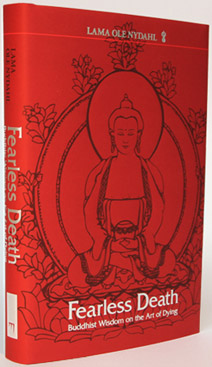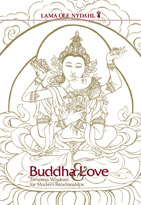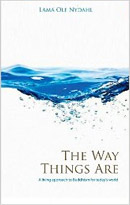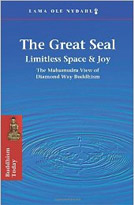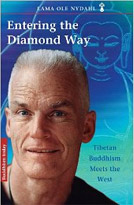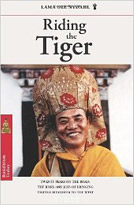Does Buddhism have insight into death and dying?
For thousands of years human beings have speculated about the world, life, death, and what follows, and countless assumptions and perspectives have been developed. The idea that there might be a beginning and an end of the world was once widespread. It can be found with the Vikings as well as in Greek thinking, and in the three major faith religions originated from the Middle East […]. Whereas in faith religions a personal god is the cause and final goal of their world, Buddhism and other experience-based religions – such as Hinduism and Taoism – proceed from a permanent cycle of arising and disappearing (the cycle of life).
(Fearless Death, page 22)
A vast component of Buddhist philosophy elucidates on purely logical bases the “emptiness” – that is, the lack of intrinsic existence and specific identity – of all composite phenomena. The ultimate nature of reality, according to this model, is a dynamic entanglement of perceiver, perceived, and perception process giving rise to all apparent subjective experiences ‘like a collective dream seen through individual eyeglasses colored by personal emotions and ideas’ (oral teaching, Lama Ole). While all phenomena and material objects are in a continuous yet impermanent state of flux, the potential for the awareness of any specific phenomena to arise is an all-pervading unlimited characteristic transcending any concept of existence and non-existence, life and death.
The world is not the creation of a higher power or something objective and external, but is constantly created by perceptions and actions. That is why one can liberate oneself by developing beyond-personal insight. Instead of blaming original sin or looking for a guilty one to blame for the misfortunes of life, and instead of hoping for something otherworldly, one simply looks at the given circumstances and effects, and focuses on the development of that which is, both in life and after life.
(Fearless Death, page 22-23)
When this self-aware dynamic potential manifests a perceiving subject, an aggregate of material components condenses in association with a subjective stream of conscious experiences – a conception and birth – and when such impermanent aggregate transforms and dissolves, we have the subjective experience of dissolution and death. Just like with any other experience of phenomena, an imputed subject has the experience (birth, death, rebirth, etc.) of an imputed object’s transformations. The stream of experiences, however, being just a dynamic expression of self-aware potential, has no identifiable beginning or ending.
When our body came into existence, three conditions came together: the egg of our mother […], the sperm from the father […], and our consciousness, which since beginning-less time had built up the conditions for being born with a particular genotype, in a specific culture, and with certain parents.
(Fearless Death, page 75)
During the course of dying, the process is reversed from what happened during the formation of the body […].
(Fearless Death, page 78)
The purely non-dogmatic basis of the Buddhist view leads directly to extensive experiential investigations of this model of life and death. For 25 centuries, yogis explored deep states of beyond-personal consciousness, dissolving into finer and finer levels of primordial awareness, beyond any conceptual central “self” identity and beyond any of the limits imposed on our everyday consciousness by the material filtering of our sensory and nervous systems.
To develop an understanding of the different states and behaviors of mind, Buddhist teachings analyze the cycle of life. It consists of a constant chain of independent moments, but can be subdivided into intermediate states […], from a certain starting point to a specific ending point, designated by the term bardo. Literally translated, it means “gap” or “between”. There is an infinite number of such bardos because everything is constantly changing. Up until enlightenment, one is always in transition from one state to another. […] Only the state where the knower recognizes its own timelessness – liberation or enlightenment – is not a bardo.
(Fearless death, page 23)
Perhaps not surprisingly, our state-of-the-art 21st century sciences seem to converge from all directions (physics, neurosciences, psychology, biology, medicine, etc.) toward the Buddhist view of the life/death phenomena and, in general, of the ultimate nature of reality; they confirm more and more the deep personal experiences of meditators of all times and cultural backgrounds.
People can learn from almost any life situation. A constant guideline should be the law of cause and effect: actions, words, and thoughts create the future. All the impressions that are sent into the world as well as one’s own store consciousness will ripen sooner or later and lead to experiences with the same emotional content. […] If one helps others to find timeless values, it creates good connections for this and all future lives. To bring happiness to others is more important than many think.
(Fearless Death, page 59)
The human maturity that is often missing, despite the good education these days, comes from the culture of distraction. One is constantly caught by desires and sensations, and does thousands of unimportant things. This leads to a distracted mind […]. In this way, the search for happiness in the outer world continues and the inner peace that actually brings happiness fails to appear. Even on their deathbed, most people do not manage to keep sight of what is essential.
(Fearless Death, page 66)
